#Write My Essay Online
Explore tagged Tumblr posts
Text
Follow Expert tips to draw an impressive essay conclusion from our essay you have always asked to "Write my essay for me". This Blog will be a game changer for you and your academic game.
0 notes
Text

Turbo Granny blunt rotation WIP
#for a class assignment due todayyyy#still gotta edit the fucking 600 word description yuck#and write another essay for a different class#and read another manga chapter for that class#and do makeup readings/hw for my mesoamerican art history class plus the readings/hw for this week#and i haven't been sleeping more than like 4 hrs a night cause i started a new medication#which also gives me evening heart palpitations lol#and im skipping class to finish as much as i can#but eventually ill clean this up and color it!#eventually#hopefully#next term i snagged a spot in the only 2D animation class this stupid college has ever had#and set up my schedule to only take up 3 days despite having 4 classes#and hopefully 2 of said classes will be pretty easy#ones a 1x a week gardening thing and the others an online design class#i wanted to leave lots of time to animate#dandadan#turbo granny#animation#fanart#dandadan fanart#character turnaround#art#digital art#artists on tumblr#trans artist#my art#my animations#krita#tw drugs
880 notes
·
View notes
Text
Sonic is fundamentally unrelatable and unrealistic - and that's a good thing
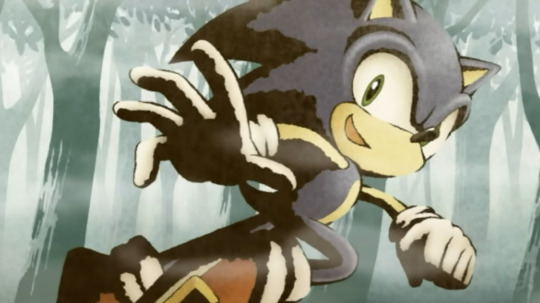
I want to address a common sentiment in the fandom that I've seen countless times over the years - the idea that Sonic should be more humanlike. Specifically, the idea that Sonic should have more human traits, such as anxiety or insecurities, that make him emotionally vulnerable in some way.
I have always felt that this sentiment strips away what I love about Sonic so much—that it goes against his character as someone who is meant to be inspirational rather than relatable. From the bottom of my heart, I truly believe that making Sonic more relatable ruins his appeal and misses the entire point of what role he is meant to fulfill. Sonic being the way he is, an inhuman being that is extremely strong and unyielding mentally and emotionally, makes him an inspirational character that is appealing outside of the realm of relatability.
Please note that I am discussing Game Sonic for this essay, not any versions of Sonic from spinoff media.
(Special thanks to @blurredblu for helping me write this essay!)
Relatability =/= likeability
First, it is important to define "relatability" for the rest of the essay, as what is seen as relatable can vary across countless different cultures and lifestyles.
In this case, we are discussing facets of the human psyche. Traits such as emotional vulnerability, insecurity, or trauma are traits seen as humanlike because they imitate the depth of the human mind. They come across more realistic, and thus relatable to people in real life who have generally gone through emotional hardships.
Relatability is also considered with the implied audience in mind, according to Craft in the Real World by Matthew Salesses.
If relatability were somehow a goal of craft, then the question should be: How can a writer go about trying to make a piece of fiction relatable? If we mean “relatable” as sharing a reader’s experience, the first place to go is audience. We must always ask: Relatable to whom? Which brings us back to the elephant in the room—to call a manuscript “relatable” is really to make a claim about who the audience is or should be.
When writing relatability in fiction, what is important to recognize is who the target audience is. Sonic is a character that was initially created to appeal to a wide target audience, not only meant for young boys but for girls, women, and an older age range in general. When it comes to marketability however, Sonic is almost always advertised towards children, and this demographic is the most pertinent when we look at versions of Sonic written with relatability as a goal. With this idea of the target audience in mind, a character who is portrayed as young and having a childish temperament would be more relatable. The Paramount Sonic movies are a great example of a version of Sonic explicitly written to be relatable to the target demographic on a broad level, heavily influenced by the culture that the movies derive from: specifically a middle-class, suburban, small-town vision of American life. Sonic is portrayed as dependent, inexperienced, and abiding by a nuclear family structure who idolises many elements of American popular culture, such as Keanu Reeves or Marvel/DC superhero comics. Compare this to the games, where Sonic is shown to be self-supporting, wise, and living life as an unfettered vagabond, all without a trace of any pop culture utterances.
In other words, Sonic was created to be the height of unrelatability to his target audience.
It is not lost on me that the prevalent desire for Sonic to behave realistically ties into the idea that the goal of crafting a good character is to emulate realistic human characteristics. A character's relatability is what allows audiences to connect with the character, which is considered unequivocally a good thing.
What is forgotten in this rudimentary line of thinking is that characters in media need to fulfill a role. Characters are not people like you or me, but fictional creations made to serve a particular purpose. There needs to be thought put into what narrative role the character fulfills and why they are portrayed a certain way to the audience. Hence, there must be a reason for the relatability, instead of employing it haphazardly.
To quote Craft in the Real World once more:
"readers’ expectations for fiction are created by their previous experiences with fiction—in other words, by culture."
The desire for Sonic to be relatable can be attributed to people recognizing pervasive tropes present in their previous experiences with fiction, internalizing these commonalities as the correct way to write good stories, and assigning these to Sonic as a result. While I can understand the logic behind this thinking, it is crucial we don't limit our appraisal of media by saying a protagonist ought to abide by a certain limitation, when it's the breaking of rules, however rigid they are, that allow for different methods of storytelling. Sonic breaks the so-called rule that a protagonist must be relatable, and it's this unrelatability that enhances and strengthens the narrative in many Sonic games. In other words, writing Sonic in a relatable way can be a way to write him; that does not mean it is the only or correct way to do so.
We should bear in mind that there are usually financial incentives to cast characters as mentally or emotionally relatable to audiences. To create a protagonist that appeals to all audiences to maximize revenue, the solution is typically to make them broadly relatable. While this can be a successful formula, it is important to not apply it to media indiscriminately. If a myriad of works all prioritise having characters be relatable over what makes them unique, you may end up sacrificing creative integrity for the sake of following a trend. In Sonic's case, you would lose the inimitable appeal that makes him stand out. While relatability can be valuable in certain contexts, it should not dominate all other considerations of writing a character, especially when it is done for the purposes of profitability as opposed to earnestly conveying a character to, ultimately, tell a story.
What makes Sonic stand out
What, then, makes Sonic stand out as a character? His inhuman mental fortitude. In a wide and varied cast of characters such as the Sonic cast, each with their own unique emotional struggles, Sonic stands out as the sole character with no struggle. He has no weak point, no Achilles' heel. Though he is weak to water, that is only a physical weakness. Mentally, he is too strong for anything to affect him long-term.
As stated before, characters are designed to serve specific creative purposes. In Sonic's case, his striking mental resilience is to highlight other messages and characters in the story. This is because Sonic usually plays the guiding or support role in his stories. He is not the sole focus. There is always at least a second character that the story focuses on to highlight that character's problems and struggles, and how that character ends up overcoming that conflict, often with Sonic's help.
With all this in mind, would Sonic stories be improved if Sonic was, instead, a human-like character with human flaws and insecurities? Or would this muddy his core concept and require all Sonic stories to be changed unrecognizably to fit this new, different character?
Sonic has no backstory - and that's a good thing
Understand that this section is not an attack on backstories in general. For the most part, backstories provide insight into a character's motivations and personality. They are effective in accomplishing what they were meant to do - creating characters that are meant to be realistic.
Sonic is not meant to be realistic.
Yuji Naka once stated the reason behind Sonic's lack of a backstory in an interview: if you uncover all the mysteries, then the character will become uninteresting.
Very little information of Sonic's backstory has been revealed. We know that he is from Christmas Island (same interview link as above) and it is implied in the Sonic 1 manual that he and Eggman already know each other and have been regularly tussling before the events of the first game. These are vague and unspecific details that are not brought up in Sonic games at all, and for good reason.
Distance is required to portray a character who you are meant to be separate from rather than analogous to. Maintaining a certain level of mystery around Sonic creates intrigue, as a question is begged but never answered or even brought up in Sonic stories. This is because Sonic's backstory has no relevance on the narrative and delving into it is not necessary.
Sonic's motivations are simple and straightforward. He likes to run and go on adventures because it's fun. He likes to help people not out of some heroic obligation but because he wants to do what he feels is right. There is no need for a backstory to explain Sonic's motivations when they are plainly presented to you in such an uncomplicated manner, and what's on the face of it is just wholly what it is.
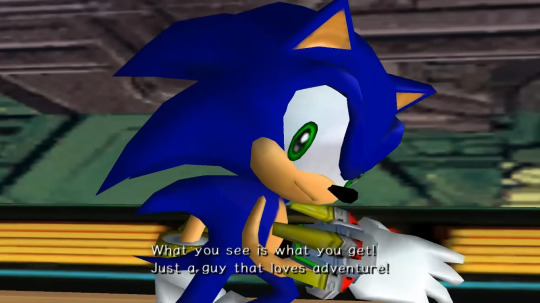
Sonic is also a character that remains static rather than having a major character arc. While he can grow when it comes to things that don't affect his overall character, such as Sonic learning and overcoming Shadow's Chaos Control technique in Sonic Adventure 2, he has no emotional conflict to overcome. He has been a fully realized character since the beginning of the franchise.
Compare this to a character like Tails, whose character arc is about him being bullied for his two tails in the past and being inspired by Sonic to be more confident in himself, as communicated in the Sonic 2 manual and his Sonic Adventure campaign. Divulging Tails' backstory is necessary for the improvement of Tails' circumstances and confidence levels to be effectively communicated in the story.
Fictional characters are narrative devices created to tell a story. They are not real. Again, there must be narrative reasons for them to be the way they are.
Providing Sonic's backstory would serve no narrative purpose—none that would serve the themes his stories and character are meant to serve, at any rate.
Sonic has no trauma - and that's a good thing
Upon analyzing Sonic's character in the games for so long, it has become astoundingly clear to me that Sonic does not have an ounce of mental trauma from everything he has been through. This should not be seen as a bad thing, but rather a well-thought-out and deliberate decision that serves to reinforce the role his character serves.
In the face of situations that would be considered stressful or traumatic to the average person, Sonic remains unfazed and even excited. There are countless examples of this: Sonic jumping from a plane with nothing but shrapnel to use as a surfboard in Sonic Adventure 2; Sonic expressing excitement that he's near an active volcano spewing lava in '06; Sonic exuberantly grinding over pits of lava in Black Knight; Sonic burning up with excitement at the prospect of dangerous stakes in Team Sonic Racing while everyone else seems to be concerned.
For Sonic, danger and near-death experiences are not a source of emotional struggle, but rather a source of fulfilment and joy. He lives life on the edge; the excitement of diving off of a plane or nearly falling into lava only fuels his love for life.
Additionally, Sonic also enjoys the simpler pleasures of life. Exploring the world. Reading books. Going on relaxing vacations. Racing through open fields. Life is one big adventure and Sonic is having a blast living it.
The idea of Sonic having some kind of secret, hidden trauma that he hides under the guise of a fake smile can be a fun fanon trope, but, for the purposes of canon and official Sonic stories, there are clear reasons why they should stay as fanon. If Sonic had trauma, it would undermine his unrelatability and make no sense given his role in his stories. Tropes such as Hurt/Comfort and Angst are ubiquitous when it comes to fandom culture, and this could be a case of those tropes appearing in the Sonic fandom simply due to the nature of fandom itself. Enjoying fanon in and of itself is all well and good, but advocating for it in canon will homogenize it by stripping away what is unique about the media we love.
In the end, there is no reason to believe that Sonic pretends or does not behave genuinely when it comes to expressing his true emotions. Sonic simply has nothing dark inside of his heart to hide. This is confirmed in Unleashed, where Sonic's heart is strong enough to resist the negative emotional forces of Dark Gaia without him even realizing. The subconscious nature of the action combined with his humility even leads him to initially think it to be Chip's doing. His heart is so strong and so pure that it is incorruptible by negative forces. This shows how Sonic's resolve is effortless and practically baked into who he is.
Sonic's internal strength is completely unconscious on Sonic's part. He doesn't actively try to be the way he is. He just is.
Sonic doesn't cry - you get the idea
It has become a hot topic in the fanbase in recent years that Sega once provided a revision note for Sonic to not express excessive emotion such as outwardly crying or sobbing.
This idea has generally been met with hostility and aversion from fans. However, this negative reaction has always confused me, and I hope to offer a different perspective to the issue.
Why does Sonic need to cry?
Let's expand on this argument for fairness' sake. A common rebuttal grants that Sonic doesn't usually cry. But in extremely emotionally difficult situations, such as loss or mourning, Sonic should cry because it is only natural to cry in such a situation.
Again, I want to challenge this notion. We could approach it from the angle of human psychology and behaviour—it is far from the case that everyone cries in response to severe adversity, belatedly or otherwise—but instead I want to explore this with respect to the narrative angle we have covered so far. Specifically, with respect to the idea that characters, unlike you or me, are designed and portrayed with certain purposes in mind.
Why would it be natural for Sonic to cry?
To help understand Sonic's handling of loss, let's analyze four examples from the series of Sonic losing someone.
In Sonic Adventure 2, Sonic stays strong and composed right after Shadow's presumed death, paying respect to his fallen ally.
In Sonic Unleashed, after Chip leaves him, Sonic takes a deep breath before moving forward with a smile on his face.
In Sonic Battle, Sonic is desperate for Emerl to live and expresses this openly.
In Sonic '06, Sonic expresses a great amount of despair when Elise dies in an explosion aboard the Egg Carrier.
It is clear from the outset that Sonic is not an uncaring individual - he wouldn't do all the selfless things he does if not because he didn't care about people. He also still feels strong emotion at losing those close to him, but he handles those emotions with a great deal of fortitude. In Adventure 2 and Unleashed, his reaction is more subdued, while in Battle and '06, it's clear that Sonic is upset and isn't afraid to show it. The difference could be due to that in the prior examples, Sonic watched them die in front of his eyes, while in the latter examples, they were already gone by the time we see Sonic's reaction.
Nevertheless, Sonic feels emotion. It is only because he does not express himself in an adequately typical way that this idea is met with so much outrage and pushback. Because Sonic does not cry, and because an expected response in certain scenarios would be to cry, it is perceived as a writing mistake that must be fixed. Sonic is perceived as a bad character because he does not fit into a rigid box of socially acceptable expressiveness.
But why is Sonic acting outside the norm necessarily a bad thing? The fact that Sonic can go through such hard situations and remain positive is a testament to his strength. The fact he doesn't cry makes him come across as superhuman when it comes to mental fortitude. That is not a mistake of his character that needs "fixing." That is the entire point.
The animosity towards the idea of Sonic not crying, that he must express himself a specific way, a distinctly normal and humanlike way, is stirred from the irrational, yet sadly common, leap in logic that Sonic must behave and experience life like you or me.
There is an irony, too, to how localised this demand of realism is of Sonic. I've seen no outrage demanding that he spill blood or break bones like us. But, apparently, he must shed tears to be a good character. Sonic is superhumanly resilient while running, or fighting, or taking on the miraculous powers of the Chaos Emeralds. Chaos is power and power is enriched by the heart. Sonic's is shown to be one of the strongest and purest out there, one that moves ever on from and through the pain of loss, grief, and tragedy. Isn't it bizarre, then, that this is considered a defect to him?
The messaging of Sonic
Sonic's core concept as an inspirational character must be maintained because it is key to the emotional messaging of nearly every single Sonic game.
Right from the very first game, you play as a plucky little hedgehog, fighting against the tyranny of Eggman's industrialization threatening to destroy all life on the planet.
Sonic is small and unassuming. But he fights anyways, determined to stop Eggman. And he does.
This concept remains throughout the franchise. Sonic always remains steadfast in the face of great adversity. From Sonic CD's "You Can Do Anything" vocal theme telling the player to believe in themselves to simple yet motivational phrases—ones that Sonic himself has given to the likes of more normal characters such as Elise: "If you have time to worry, then run!"
There is even a quote on the Japanese box art of Sonic & Knuckles comparing Sonic to the Sun, the far and unreachable star in space that our entire galaxy revolves around.

We look up at the Sun like how we look up to Sonic.
As brought up earlier, Sonic is the antithesis of relatability to his target audience, children.
This is because he is meant to inspire children.
The fact that Sonic remains so popular and successful to this day is undeniable proof that relatability is far from a necessary ingredient for likeable characters. Given the fact that Sonic is such a strong-willed character, that he fights endlessly against adversity with a smile on his face, that he always gives positive words of encouragement, is it any wonder why he is so popular with children? Sonic is a wonderful role model that promotes living life to the fullest. Sonic is deceptively wise, seeming to know simple yet effective solutions to every problem. Sonic encourages you to chase your dreams, to stay strong through hard times, to enjoy life.
Sonic is a friend who is always there for you.
Not only does Sonic provide guidance to characters, he provides guidance in the real world as we navigate our lives and the trials and tribulations that come with them. Each character that presents a problem is the character we are meant to connect with, and Sonic is who we strive to be.
CONCLUSION
I do not hold any grudge against relatable characters. I love them, just as I love all kinds of different characters in all kinds of media.
I believe that coexistence is possible. I believe that you can praise a character for their relatability and realism, just as you can praise a character for being the antithesis of both of those things, and these do not have to be contradicting principles for one to have. It all depends on a character's narrative function and how their character traits – both relatable and unrelatable – serve the story that is being told.
Sonic the Hedgehog is a character whose role in the narrative is to inspire and guide other characters. From a Doylist perspective, he represents the prominent, all-embracing messaging about staying strong and positive despite all odds, inspiring and guiding his target audience.
Every decision put into Sonic's character traits serve his role perfectly. Of course this extraordinary character does not behave like you or I do. Why would he? That's simply not his nature; a gust of wind in the breeze, moving endlessly all throughout the world. A pure and positive heart who has achieved the innate desire of all humankind in a way that we will never truly understand, free from the burdens of human nature. Freedom.
Sonic is unrelatable and unrealistic. And he is an amazing character.
#sonic the hedgehog#sonic#essay#sonic characterization#sonic fandom#long post#sonic analysis#my first time writing and posting an essay online about sonic!#i've come to realize that people may actually be interested in what i have to say#and i am very passionate about sonic so this was a great exercise for me
426 notes
·
View notes
Text
I just need everyone to know that I fucking hate Hamlet prince of Denmark. This stupid fictional man makes me so goddamned angry I need to squeeze him like one of those rubber toys where the eyes pop out and shake him so violently like a child discovering snow globes for the first time. I fucking hate Hamlet prince of Denmark oh my god.
#I read hamlet for the first time a few weeks ago for class and I'm writing abt it in an essay#I liked hamlet the play though less than I thought I would based on how hyped up it is#and oh my god do I hate this stupid man so much#I don't know if this is the intended reaction#I know you're not supposed to Like him but I think he makes me angrier than probably the average audience member#he's like the 16th century version of chronically online I don't know how to explain it but he is#hamlet would love reddit#like so many of his problems would have been solved if he just talked to people he makes me so mad#anyway#hamlet#shakespeare#hamlet prince of denmark#that asshole#you know the jurgen leitner rant? that's how I feel about hamlet#not exactly the same obviously but the same energy#the heir speaks
28 notes
·
View notes
Text

#if you can't tell i wanted to show aideen's light attempting to reach her as she pierces her own chest with some pandorian sword and garnok#is reaching from behing#odette bodning herselft to garnok???!?!?!??!#that's what i made it look like lol#no lore no context i just imagined this in my head and wanted to get it out#ssoblr#star stable tumblr#sso oc#starstable#star stable online#sso#sso art#starshine legacy#star stable art#my art#odette nobledew#aideen#garnok#sso garnok#sso aideen#the sword is magical in some way so as it goes through her - the blood infused by pandorian energy is welp obviously pink#i didn't sleep at all tonight whoops#writing essays in tags is my passion#i was redyeing my hair at 6:36 am#thats kinda kachow#it took a little under three hours
44 notes
·
View notes
Text
PART 1: How did we get here, again?:
The origins of Villainess Stories
Villainess Stories are an interesting phenomena that took a chokehold of the mainstream anime community, right around 2020, thanks to a little anime named:

“My Next Life as a Villainess: All Routes Lead to Doom!”
I say this, but while it was popularized in 2020, that’s not where this is even close to starting.
I always find myself having to remind most people that: The anime is rarely the origin.
I’ve stated plenty of times before, animation is expensive. More often than not, animes are a commercial of sorts, for manga, light novels and merch. It isn’t until the source material has proven to be successful on its own, that it gets an adaptation.
A risk of this magnitude had to come from somewhere.
That somewhere was Shōsetsuka ni Narō.
Much like many of your favorite animes, My Next Life as a Villainess began as a web novel in the site “Shōsetsuka ni Narō”. A self-publishing Japanese website that brought you “Didn't I Say to Make My Abilities Average in the Next Life?!”; “Log Horizon”; “I Was Reincarnated as the 7th Prince so I Can Take My Time Perfecting My Magical Ability”; “I’m in Love with the Villainess”; and for anyone who follows my page: yes. Ascendance of a Bookworm.
Among many others. Like seriously, a bunch of the most popular animes you’ll find being broadcasted in the latest part of this decade - started in Naro from 2012 - 2016.
“My Next Life as a Villainess” was published in 2014, and it ran all the way until 2015. With the Light Novel running from 2015, to this day.
Unfortunately, if you try to find a bit of a timeline as to where the genre came from, you will find a loud crowd that claims that all these mangas are a rip-off of one another, that have no basis on video games. That’s a blatant lie, born mostly out of a complete disinterest in the genre.
The villainess genre has a long, convoluted and frankly complicated story.
Unlike western media, in which you basically take one of the mediums (film, animation, or gaming) and more or less see it evolve with little to no influence of other mediums - Japanese media takes inspo from other mediums all the time.
What do I mean by this?
Let’s take animation. Film animation has a very linear timeline. It starts with Disney, moves to Pixar, moves to Dreamworks. It references almost only itself. If Hollywood does something you can barely feel it film animation. If something becomes popular on the small screen and tv, or streaming services, Film Animation has no clue.
Japanese Animation is different. Manga, webnovels, and games tend to influence each other all the time.
This is why you have extremely popular animes that have a mix of other medium in them. Like, Sword Art Online, which involves mixing elements of video games mechanics with anime tropes. As well as adaptations across the mediums: manga being adapted to animes, live action, musical theatre and even games.
This makes trying to analyze just anime, a fruitless endeavor.
In part too, because the ones who determine what anime becomes an anime, is in large part the manga industry.
Like the BIG THREE are the big three, not for any issues related to the anime, but because they saved Shonen Jump - a manga magazine. Sword Art Online too, became popular due to already popular JRPGs and MMOs. At the same time, it’s undeniable success, and change the course of history forever - came first in the form of a Light Novel (yes SAO was also originally a Light Novel entered in a contest in 2002). So it comes as no surprise that the first to feel its impact was the light novel industry.
The existence of “My Next Life as a Villainess” has then to be divided Parts. The Isekai Part of it, Game Part of it, and the Manga/Anime. Which melted together in the form of a popular webnovel.
Now. Isekais are weird.
People will always point and laugh about how the “original Isekai” is Alice in Wonderland or Wizard of Oz.
But Isekai is a hard thing to define, specially its origins. At it’s core, Isekai is just “Being sent to another word” and that’s as universal as of a trope as any other. After all, it’s the first step of A Hero’s Journey taken to its most literal of interpretations. Crossing the Threshold into a New World is pretty much the beginning of any adventure. It stands to reason that this “New World” is a literal new one. This leaves everyone guessing as to what you’d consider the “first Isekai”. Some will point at Urashima Tarō, some at the Super Mario Bros movie, some will point at Superbook, or Mashin Hero Wataru.
That said, nowadays, “Isekai” became a genre of its own. It has a very specific aesthetic, tropes and characters.
So rather than to try and find where it originated, it’s more productive to see when it started to take the shape of what we would nowadays consider to be the essence.
And something to notice too, is that the trope varies greatly depending on what current you take. You could consider Digimon a precursor of Sword Art Online, but that would have very little impact on Villainess tropes.
In this sense, I would consider Vision of Escaflowne (1994), Inuyasha (1996) and Fushigi Yugi (1991) as the pioneers of what it is now Isekai Shoujo.
They all talk about high school girls being transported to another world. They all talk about destiny and fate, and whether we have to follow the path someone else has set for us.
Vision of Escaflowne presents the idea of fate. It involves also war and the nature of trauma. It’s a slightly more mature story. But it cements this idea of “the chosen one”.

Talking about Fushigi Yugi, it’s often considered to be the first “transported into a novel” Isekai with a shoujo romance focus. I wish I had read it or watched it because a lot of the tropes that eventually become a staple of the Isekai story come from here. Including the predestined story, someone being told they have a role to play, the jealousy of someone trying to steal your position, as well as a romance based around saving the world.
And I cannot possibly understate the influence of Rumiko Takahashi’s Inuyasha. This woman quite literally created the concept of a harem and reverse harem romance with Ranma 1/2. She’s the queen of love triangles. While it would take a bit more for the Isekai genre aimed at women to fully take off, it’s undeniable to anyone who’s watched it how much contemporaries borrow from it. Not to mention, it’s perhaps the most famous one. While Escaflowne and Fushigi Yugi are both relatively unknown, specially in the west, everyone knows Inuyasha. It had 164 episodes, 5 films, and even a recent sequel.

Parallel to this, games started to transform too.
For villainess characters in otome games have been here since literally the inception of the genre.
Angelique, the (by and large) considered to be the pioneer or inventor of the genre, was released in 1994. This game has a villainess character, in the name of Rosalia de Cartagena. The game is about the Queen that rules the Universe, deciding to chose a new ruler, via a competition. She chooses two Queen candidates: Angelique and Rosalia. Rosalia being the rival, you (as a player) are supposed to defeat.

Surprisingly, though, when the game comes out, Rosalia becomes hugely popular with audiences. “How popular?” You may ask.
Well, popular enough that in 1998, KOEI released a game named Angelique DUET, in which you can choose to play as either Angelique or Rosalia.
Yeah, so you may considered that the villainess as the main character trope dates back for as far as 1998.
But…well, I’m twisting the truth just the slightest bit.
While the original Angelique story, is about two rival Queen Candidates competing for the throne, and yes, you will lose the game if you let Rosalia win…- Rosalia is never a full fledge villainess.
Yes, she’s a a rival, but not a villainess.
She isn’t evil.
The original game had two (main) endings: The Queen Ending and The Love Ending.
And in the Love Ending, which was still a Good Ending, Rosalia would become Queen.
You could quite literally, only choose between love and duty. And if you chose Love, you were letting Rosalia win.
She wasn’t evil. In fact, she’s described as talented, smart and was literally trained to be a Queen. It’s just that in the framing of the story, you have to defeat her to become Queen.
And even if you win, in Angelique Special 2, (where you play as the successor to Angelique) it is more than hinted that Angelique and Rosalia are friends - even when Angelique became Queen. Which is supported by the fact that the player can actually GAIN friendship points from Rosalia in the original game, by going into her room and chatting with her.
So, Rosalia is not evil, not by any long shot.
But this game cemented the idea of two Rivals Queens, an extensive Harem of Men, and the idea of duty vs love.
Albarea’s Maiden, released in 1997, also introduced the concept of the Saintess or the Holy Maiden, set to save the world by competing against other girls. With one of them being a counselor-type supporting character, and your active rival.
Later famous Otome game, Tokimeki Memorial Girl’s Side, released in 2002, popularized the concept of Friendship Routes. You could avoid the Rival Mode and befriend Shiho Arisawa, Mizuki Sud, Natsumi Fuji or Tamami Konno, instead of the Love Routes.

So you have these two genres, and both are growing in its own ways.
Otome series keep gaining popularity, like massive amounts of it. Obviously, it grows so much that it creates its own ecosystem. Varying from school romance, to historical fantasy, and all the likes. Games like Brother’s Conflict, Diabolik Lovers, Uta no Prince-sama, among others exploded in popularity around 2010-2012.
Meanwhile shoujo is also thriving as its own thing. Developing its tropes, one of which will come extremely handy later, that involves the “pick me” girl Japanese Version. Series like Kimi Ni Todoke, Kaichou Wa Maid, Special A, become extremely popular too around this time.
Finally, Summer of 2012 rolls around and.
Oh how I dread this.

As much as I would like not to talk about Sword Art Online, it’s unfortunately enough, a critical piece for most of anime history.
I cannot understate how much this anime changed the game. It wasn’t the first to introduce the concept of video games and anime - with The World Only God Knows coming out in 2011 - but it was the first to (in the first season) take its premise extremely seriously. It was the first to combine Isekai with gaming, and a power fantasy that many would soon find themselves indulging into. That’s it, a world where what makes you a loser, is your biggest strength.
Which launched it to popularity.
It became a sensation; a phenomena.
It opened the flood gates for many others who would try to combine anime, gaming and the Isekai concepts.
In the webnovel sphere, meanwhile, you could see that Magic Academy Stories and Historical Fantasy with the Princess archetype were fairly popular already. But it’s way harder to distinctively examine them for one reason.
Simply put, uhm. It’s, ah, sexism.
While a lot of stories aimed at boys would often get picked up without a second thought for an anime adaptation - the same could not be said of stories aimed at women. Be it webnovels, light novel or manga, it takes extreme power for a shoujo to get picked up. So, these stories simply don’t get an anime, which means we don’t get adaptations, which means no translation or English documentation.
And honestly? There’s just so far as my Japanese friend’s broken English and Google translate can get me.
It’s easy for me to analyze Angelique’s influence because there’s English archieves of it!
The same cannot be said, of what’s essentially a fanfiction website filled with self indulgent writing. As much as it is a treasure trove of why the genre blew up - I simply cannot access it.
But what from what I can see Isekai Villainess Stories exploded in 2014. You could already see it bubbling up in 2013. Notably, for anyone reading this from the AoB tag, Ascendance of a Bookworm came out in 2013. An Isekai story that heavily focused on Royalty and the “Holy Maiden” archetype.
It took just the right tweaks to get it right.
The first to appear, from all the digging I could find in English Archieves, was in 2013 with the “I Will Live with Humility and Dependability as My Motto” novel. It was discontinued in 2017.
It is nothing like “My Next Life as Villainess”. The protagonist was about to enter elementary school when she dies, the story told is one of a manga she was reading (not a game), and it lacks the harem aspect that would later be so cliche it borders on brain dead. But you see a lot of what would become essential. A heroine with a goal different to romance, an original villainess that bullies the heroine, and a wish for a simple no-problem life.
After that, most of what followed were novellas and small short stories, much which are now discontinued or on hiatus. Which is to be expected. Naro allows all types of stories in its website. And back then there was no format. No tropes, no guidelines to what works and doesn’t.
Trial and error landed us with “My Next Life as a Villainess”. And I mean a lot of trial and error. From what has been archieved and translated on English, there’s easily 15 stories with a similar premise that were published in 2014. Which may not sound like a lot, but that’s only what has been popular enough to be saved into English. I cannot imagine how much got lost in Japanese.
But, there you have it.
First, the sudden explosion of Isekai Gaming with the popularity of the Sword Art Online Anime.
Followed by a growing interest in Otome Games. An audience prepped by the original 1994 and 1996, to be endeared by a rival/villainess character.
An audience of Shoujo fanatics which grew up with Isekai shows like Escaflowne, Fushigi Yugi, and Inuyasha in the late 90s.
And an audience of webnovel enthusiasts, already in love with princess aesthetics and magical academies.
Anyways.
Once that reached the main consciousness, all hell broke loose.
After “My Next Life as a Villainess” blew up, it was only a matter of time for countless of self-published stories to follow suit.
Obviously, I’m glossing over a lot of history. I wasn’t able to touch upon the Light Novel and Visual Novel games, mostly because that’s a massive sinkhole you’d need a MASTERS to sort through. Made, entirely not easier, by the fact that mediums keep interacting with each other. Visual novels get picked up, turned into anime, which inspires the next batch of game developers and artists. And the feedback loop is somehow even quicker there, for some reason.
Like, My Next Life debuted in 2014, we got the anime until 2020, and its popularity only reached anime-backed levels of explosion until 2024. It took ten-fucking-years for this to become a thing. Whereas shonen and shonen manga has maybe 5 year gap? Shonen Jump spits out anime adaptations almost as fast as it cuts anything that isn’t OnePiece levels of popular. Again, it’s a can of sexism worms I’m not interested in today.
“Wait,” you ask. “I still don’t get it”
What do you not get?
“Well, I understand we’re the Isekai aspect comes from. I understand the gaming and all. But wasn’t Rosalia a good girl? How do you go from the Rival-Everyone-Likes in the game, to the horrible Villainess that The Original Catherine is meant to be? Her description of a the game’s villainess is far meaner than Rosalia was”.
Alright, so, you remember how I named these series “All Girls Dream of Cinderella?
“Yeah”
Well. We now have to talk about Cinderella.
PREV << MASTERLIST >> NEXT
#essay#essay writing#isekai#my next life as a villainess#villainess isekai#sword art online#Angelique#i'm in love with the villainess#villainess#it’s tough to tag these ones#sighs
20 notes
·
View notes
Text
“describe your childhood bedroom.”

Pink… So pink. Sprinkled with flowers and butterflies, the room was fit for a fairy princess disguised as a disturbed child. Shelves up to the ceiling filled with dusted snow globes and candles unlit, untouched, and unnoticed for more years than she had breathed in life’s defiled air. The floor was scattered with various toys, bubble wands, sticker books, and imaginary friends.
She never found genuine interest in any of it. She was defective. Yet she forced herself into fake tea parties with teddy bears and dreamlands of mermaids because she understood that’s how children her age were meant to be. They were meant to frolic within their innocence before the grim reaper of growing up snatched their souls from them. So, she compelled herself into normalcy, never truly able to imagine away the filthy ghost of guilt that haunted her. A little girl like this shouldn’t even know what it means to feel so dirty. Dirty like a washed up whore.
The toys that littered the floor were worked with rather than played with. The only thing she truly knew how to play with was herself. Supple skin, both torn and tender, she rubbed and fingered all the sorely intimate parts of herself she was taught in the backseat of a car. A sparkly, signature pink bed canopy hung high above her every night she wept. Dreams, nightmares, and prayers to God were caught and forgotten all the same in the dream catcher hanging from the endless possibilities of midnight.
There wasn’t ever a night where she didn’t cry herself to sleep. In truth, I don’t think there was ever a night where she even slept at all.
#online diary#diary#diary entry#digital diary#girl blog#girl blogger#girlblogger#poems and poetry#emotional writing#trauma dump#trauma#healing through writing#healing through words#my diary#dear diary#writeblr#writer#trauma writing#personal essay#bunny girl#writers and poets#healing poetry#healing#healing process#short poem#writing blog#writing prompts#writing prompt#journal prompts#writing inspiration
13 notes
·
View notes
Text
I wrote about Dana Scully and Gillian Anderson in my assignment and got ✨ 30/30 ✨
#it was actually a deep and depressing assignment talking about masculinity and feminity#and I had to watch a documentary called ''Miss Representation'' (which I recommend watching btw even though it's oldish)#and then talk about how women are portrayed in media and so I talked about Scully because even though I just started TXF-#I love her so much and she's a powerful character and truly an icon and I genuinely mean that wholeheartedly#anyways my professor LOVED my essay and said she would have loved to talk to me in person about my thoughts (online class)#but I'm glad it's an online class because respectfully ma'am- I am TERRIBLE at talking about my thoughts in person!#and I'm almost equally terrible at writing my thoughts down and have to constantly take breaks on my assignment because I get overwhelmed#anyways not to toot my own horn but I was worried about my assignment and was surprised by the feedback#I had other topics about masculinity and feminity besides writing about how women are portrayed and treated in media-#but I'm glad I was able to talk about Scully and how Gillian was treated at times (and I wanted to talk more but couldn't due to time)#Dana Scully I love you 🫶#dana scully#gillian anderson#personal
7 notes
·
View notes
Text
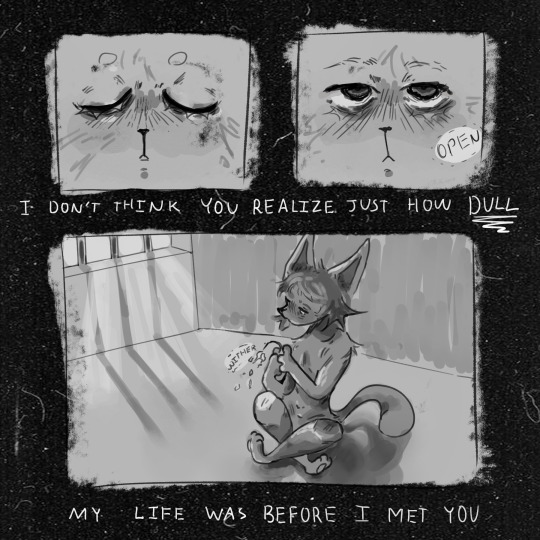



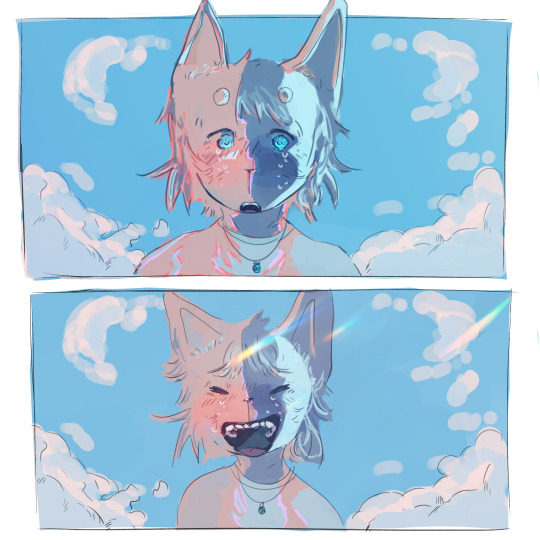
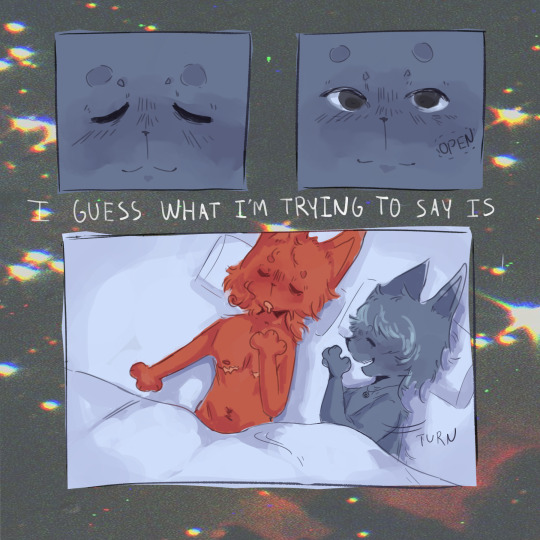
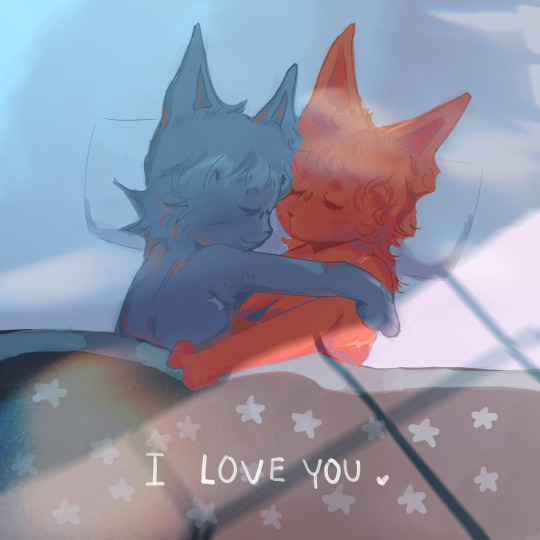
i guess what im trying to say is
i love you .
@201-klz-dead
#happy birthday <3#if ive been not very active online recently it’s probably because ive been spending a shit ton of time working on this sorry#anywayz im gonna go take a nap now i slept super late and woke up super early to finish this#i WILL be writing a whole ass essay in ur askbox later btw#i loveb yuu <33#hope it wasnt too sappy and gross.. i tried very hard to make it not sappy but um i eventually gave up on that haha#anywyas.. i lowv u i loev u i love u… <- i have a lot more to say on this and you will be forced to hear my insane rambles on it as soon as#i wake up from my nap :3#happy birthday i am so so so happy that i got to knwo yu…#my art#furry art#gay furry#digital drawing#digital art
49 notes
·
View notes
Text
"TME privilege" and "AFAB privilege" do not exist in a meaningful capacity. non-transfems are fully capable of and often do leverage transmisogyny against transfems in queer spaces. that is a real dynamic that exists. but i think it's a huge mistake to treat lateral bigotry as another privileged/oppressed axis
... in my experience, these phrases serve only one purpose
"TME privilege" and "AFAB privilege" equate you with cisfemininity. a trans man uses his assigned sex to gain sympathy from cis women to hurt trans women. an ftx enby has more privilege than a trans woman, bc they are interchangeable with cis women
they flatten our experiences with transphobia and ignore the massive span of gender expression we have. a trans man is not usually capable of "utilizing his ASAB", he is more likely to be isolated and mistreated bc of his transmasculinity. an ftx enby can look like fucking anything, not every nonbinary person looks like or are treated like women - and when they ARE it certainly isn't a privilege.
what is really meant when someone says you have "TME privilege" or "AFAB privilege" is that they think you have cis privilege. whether its the privilege of being perceived as a cis man or a cis woman, that is what they mean. to me, this is like saying a closeted trans woman is benefited by the patriarchy bc she is treated as a cis man. maybe that is true in some very very limited capacity but her transness will ALWAYS be present and her transness will ALWAYS come before her supposed "male privilege". MY transness will always come before my supposed "TME privilege".
#chattering#i also think tme privilege can be used to equate transmascs w cismasculinity but i dont have as many concrete thouhjts on that#partially bc this was somewhat inspired by my research for my essay im writing which is focusing mainly on the transmedicalist attitude tow#rds enbies and how that has expanded into the online trans community at large#so i was mainly thinking abt how trans transphobes treat enbies like we're AFAB by default and the blend of transphobia/sexism that results#from that assumption
38 notes
·
View notes
Text
AVOID & USE

#essay help online#essay help#essay helpers#write my essay#essay writers#My Homework Help#essay assignment help#Essay online#assignments#essay writing service#essay writing services#essay writing#best essay writing#essay tips#student tips#study tips#writing tips#tips and tricks#tips for writers#tips#life hacks
56 notes
·
View notes
Text
an excerpt from a blog post I made, because I feel like it's something pretty important to be aware of, and think about.
"Today I read a book. Funny, I know. Dostoevsky does this silly thing sometimes where he talks about books while he is writing a book, and it's very interesting and impactful. In 'Notes From the Underground', on the final page before the book ends he talks about how life would be meaningless without books, and how we would have no idea what to like and what to do and what to say. My translation reads: "Leave us alone without books and we would be lost and in confusion at once. We shall not know what to join on to, what to cling to, what to love and what to hate, what to respect and what to despise." This is Fascinating, by the way. And 100% accurate too! Society is entirely based on shared opinions, thoughts, and feelings, which is why propaganda works.
It's slightly different now, as we have social media, so if we were left without books we would still have a compass that directs us to what we should like and what we shouldn't. However this doesn't mean that we still wouldn't be lost without books, or literature, because it's such an important part of our history and society that the sudden erasure of it would wreak havoc. Already media literacy is declining partially as a result of people not reading as many books, but if they were gone entirely you would lose perspectives, insights, and opinions that can already be hard to verbalise, never mind fully share thanks to copious amounts of censorship throughout the world.
Speaking of censorship, what I mentioned above is why book banning is such a dangerous thing. Because literature affects the world around by informing people and giving them new views and provoking new thoughts that should encourage them to think about the state of the world around them. Read banned books. If your country/state/city/town/school has banned a book, read it and try and figure out what in that book provoked them to ban it. Just as something to get you thinking.
If you don't read, you should start btw. It doesn't need to be crazy. And don't feel pressurised to throw yourself into the deep end, and have the first book that pick up in months be some lengthy and wordy classic. You don't have to read thought-provoking existentialist literature for it to count. Anyone who tells you that you do, or acts like they're better than you for solely reading classics or something like that, is lying. Read what you want. Regardless if what you want to read is the MHA manga or Warrior Cats or ACOTAR or actually some profound classic, I promise you it will do you so much more good than any amount of consumption of social media content. Not reading can, and will, kill your brain."
Just read a book. Read anything. I promise you can work your attention span up to being able to read books in one sitting again, it just takes a minute. I promise, it'll be one of the best things you do. The more you read, the better off you'll be.
#literature#reading#media literacy#analysis#media#media consumption#please do not 'consume' books by the way#the idea of 'consuming' content has done so much harm to online spaces#engage with books. interact with them. think about them.#write book reports and critical essays and have discussions with other people who have read the same book#stay away from online reviews about books from strangers too#people will spew shit for the sake of having something to talk about#sometimes you just won't get a book#sometimes you might now like it. you might not finish it. but there are people who take that as an automatic declaration that the author an#the book are both just bad or wrong#or they won't be able to grapple with certain themes in a book#and that's okay#but do not interact with those people when they bring it online#that's my recommendation#anyway#rant over#books#books and reading
4 notes
·
View notes
Text
How Does The Brain Work?
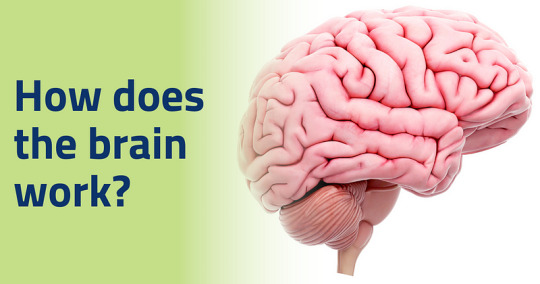
The brain stands as a marvel of biological engineering, Composing of a multitude of bodily functions ranging from cognition and memory to emotions and sensory perception. Together with the spinal cord, it constitutes the central nervous system (CNS), the command center of the human body.
Composition of the Brain
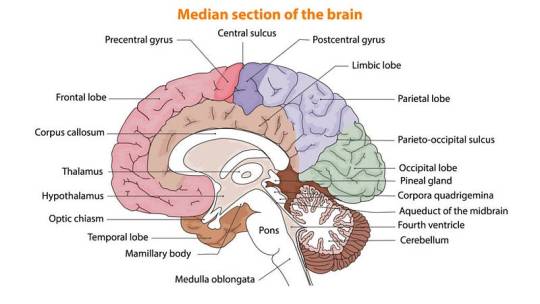
Weighing approximately 3 pounds in adults, the brain’s main structure comprises about 60% fat, interspersed with water, protein, carbohydrates, and salts. Unlike muscles, it houses a complex network of blood vessels and nerves, including neurons and glial cells.
a) Gray and White Matter
Within the central nervous system, gray matter and white matter occupies distinct regions. In the brain, gray matter forms the outer layer, rich in neuron somas, while white matter constitutes the inner section, primarily composed of axons unsheathed in myelin. Conversely, in the spinal cord, this arrangement is reversed.
b) Brain Functionality
The brain operates by transmitting and receiving chemical and electrical signals throughout the body. These signals regulate a myriad of processes, with the brain disseminating each input. Some signals remain confined within the brain, while others traverse the spinal cord and nerves, disseminating information across the body’s expanse. This composes neural network relies on billions of interconnected neurons.
Major Brain Regions and Their Functions
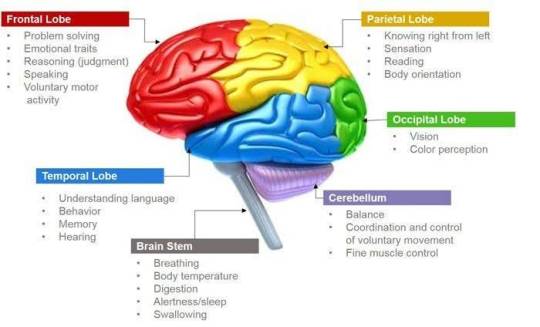
1.Cerebrum
Dominating the brain’s landscape, the cerebrum encompasses the cerebral cortex and underlying white matter. It governs a spectrum of functions, including motor coordination, temperature regulation, language processing, emotional regulation, and sensory perception.
2. Brainstem
Serving as the bridge between the cerebrum and spinal cord, the brainstem comprises the midbrain, pons, and medulla. It regulates vital autonomic functions such as heart rate, breathing, and reflexive responses.
3. Cerebellum
Nestled at the posterior aspect of the brain, the cerebellum coordinates voluntary muscle movements, posture, balance, and motor learning.
Brain Coverings
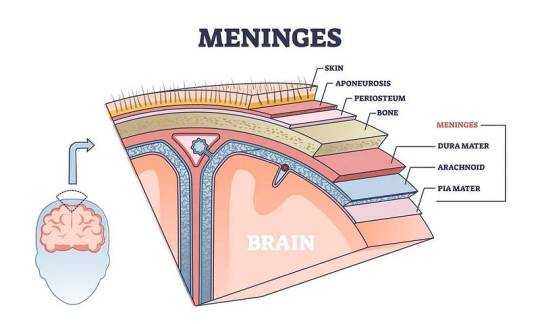
a) Meninges
Three layers of protective membranes, collectively known as meninges, enshroud the brain and spinal cord. These layers — dura mater, arachnoid mater, and pia mater — shield the delicate neural tissue from physical trauma and infection.
b) Lobes of the Brain
Each hemisphere of the brain comprises four lobes, each harboring distinct functional domains:
Frontal Lobe: Governing executive functions, motor control, and higher cognitive processes.
Parietal Lobe: Integrating sensory information, spatial awareness, and perception of pain and touch.
Occipital Lobe: Specialized for visual processing and perception.
Temporal Lobe: Involved in auditory processing, language comprehension, and memory consolidation.
Deeper Brain Structures
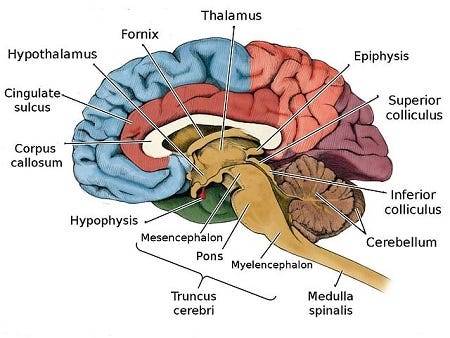
These encompass important structures such as the pituitary gland, hypothalamus, amygdala, hippocampus, and pineal gland, orchestrating hormone secretion, emotional regulation, memory consolidation, and circadian rhythms.
Blood Supply
The brain receives its oxygenated blood supply through the vertebral and carotid arteries, ensuring adequate perfusion of neural tissue. The main network of blood vessels, including the Circle of Willis, safeguards against ischemic insults and facilitates intraarterial communication.
Cranial Nerves
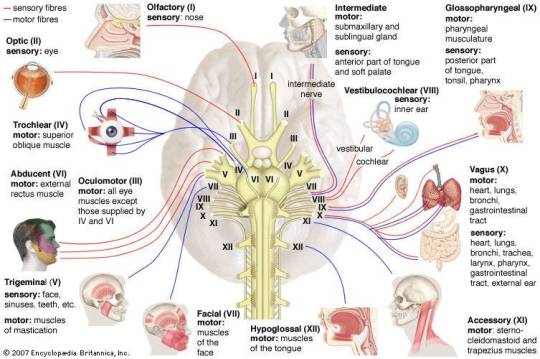
The twelve pairs of cranial nerves, originating from the brainstem, mediate a diverse array of sensory and motor functions, encompassing olfaction, vision, facial expression, and auditory perception.
Comprehending the anatomy and functionality of the brain fosters a deeper appreciation of its complexity and facilitates advances in neuroscientific research and therapeutic interventions aimed at diminishing neurological disorders.
Understanding the detailed anatomy and functionality of the brain is crucial for medical students embarking on their journey of study. Expert Academic Assignment Help offers invaluable assistance in navigating the complexities of neuroscience and related subjects. By leveraging expert guidance and support, students can excel in their medical education and contribute to advancements in the field of Medicine. Email us at [email protected] to embark on your path to scholarly excellence and professional competency.
#studying#studyblr#study blog#study aesthetic#student life#student#medical student#medical school#medicine#university student#university#university life#assignment help#medical students#nursing student#nursing school#healthcare#health and wellness#mental health#psychology#phd life#phd thesis writing service#online writing#do my online class#academic writing#essay writing#academic assignments#academia
13 notes
·
View notes
Text
Have to write a 2-4 page essay on hinduism. It’s due on friday. I am genuinely interested in the topic now, but it’s so vast, my mind can’t comprehend half of it and I did my research in English, while I need to submit it in Czech and now I’m realizing I can’t write in my own first language (skill issue, ik). I want to actually understand and actually do this topic justice, but I just keep falling into random rabbit holes knowing I’m not even scratching the surface and the even more interesting stuff is there, I just don’t have the time to find it.
#my draft is filled with notes to look up more stuff#does anyone have a recommendation on a free online lecture??#hinduism#essay writing#school essay
13 notes
·
View notes
Text
okay if my math is right i should have this two year degree finished by next fall at the 3 year mark. fine if not but waaaah i am both trying to pace myself and severely over it for the time being. a summer class or two will 100% make that happen. get me Out of here just i want a job that pays better fuck grad school for the time being i am just sick of retail (<- has retail shift in less than 9 hrs goodnight)
#ALSO my workload is just Easier given that i don't have essays to write anymore#i LOVE writing essays and reading and all that. it is also the most time consuming shit in the world.#honestly might see if i can still get into an online class this semester. for the ffucking credits
7 notes
·
View notes
Text
My goal was to grade 10 papers today. I really really reeeeaaaallyyyyy didn't want to and had to fight tooth and nail through the executive dysfunction. I clawed my way through at a pace of one essay per hour. I hated it, but I did it!
It's not even the fact that I reached my goal that made me happy (it was arbitrary). It's the fact that I'm even capable of getting through difficult things I don't want to do at all. I have been working on my self-discipline and focus for years and I'm very proud of myself for how far I've come.
#adhd problems#considering that 9 years ago i was failing several university classes due to undiagnosed ADHD#and in the past 3 years I've grown enough to do an online master's degree which required me to write a 12k word dissertation by myself#and in the past 5 months i started a job as a university professor and i have to be so self-motivated#i am solely responsible for making lesson plans and doing all the grading#grades are due August 17 and i have graded 30/40 essays as of today#if i can get 5 more done tomorrow and 5 on the weekend i can submit them on Sunday#which is a whole week early and was my carefully scheduled goal#so yeah the fact that i can force myself to stick to my schedule even though i don't HAVE to? 9 years ago me could never#personal#and tbh this is my version of self-care and it sucks but i can do it#i will take great pains to never let myself feel the way i did in 2015 when i flunked out of school#I'll get my grades in early so i can let myself enjoy the rest of the summer
8 notes
·
View notes